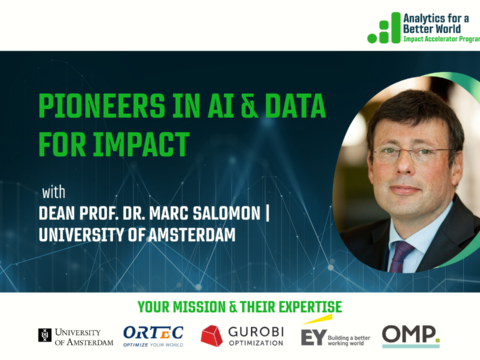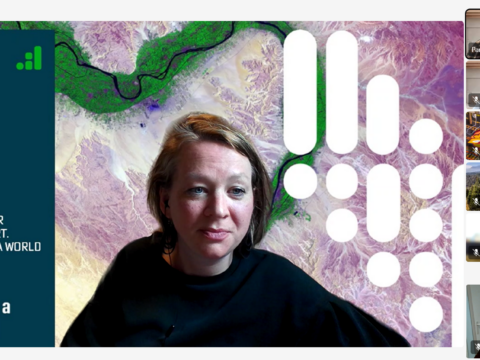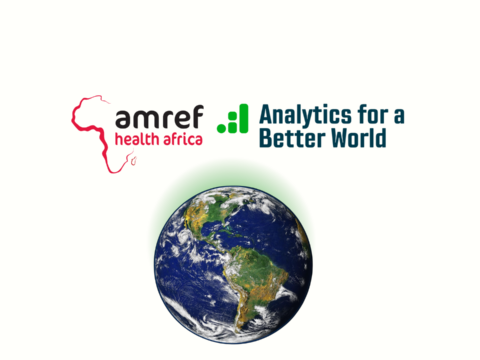Parvathy Krishnan
See profileKai Kaiser
See profilePartner impact story: World Bank & ABW are bridging the gaps
Teaming data scientists with domain experts

Senior economist at the World Bank Kai Kaiser and Parvathy Krishnan, data science consultant at the same institution, know very well how difficult it can be to apply data analytics in developing countries. At the same time, that’s where data science can really add value. Especially given the World Bank’s mission to reduce poverty and promote shared prosperity. Especially given the World Bank’s mission to reduce poverty and promote shared prosperity. “In terms of analytics, that means you want to find ways to harness some of the incredible technical capabilities that have emerged to solve those issues”, says Kaiser. “Asking the right questions, bringing in new developments and some academic knowledge, and connecting it to the people and the processes where it will make a difference.”
The World Bank prides itself on being a data-driven organization. In 2021, it published a World Development Report entitled Data for Better Lives to research how to connect better data with important issues on the ground. Technology, people, and process are the three key elements and they’re all interconnected.
Closing the loop
Kaiser, senior economist: “There’s a gap between all the new opportunities, the ability to collect appropriate data and use analytics, and the last mile of applying this to developing countries. I come from a background where we used to run the regressions offline. We would write a paper and hand it to the people who were supposed to put things into practice. What is most exciting about the recent technological developments is that we can close that loop far better. But people who work in, or make the decisions in, the public sector need to be convinced of the value of analytics. It’s new to them, but it can change lives for the better. We need to demonstrate that it has real benefits for them and for what they care about: the public spirit.” Kaiser is clear on how to reach that goal: “It takes a village to raise a child. In this case, it takes teamwork. The domain specialists, the people who ask the questions, don’t usually have an engineering background. They’re not aware of the technological possibilities. On the other hand, there’s the data scientists who do have the technological skillset. We need to build collaborative relationships between these two different worlds. To solve the issues of concern with our rapidly developing technological capabilities and to ask more refined questions over time, giving domain specialists practical solutions and empowering them.”
The biggest challenge for data scientists in other teams is to explain what they are doing to domain experts.
Cross-disciplinary teams
According to Kaiser, the new data landscape also requires a new generation of public-private partnerships. Data science consultant Parvathy Krishnan elaborates: “The problem is that there is not a lot of equity in access to data. Most of the data is currently used by the private sector, by big companies. That is where the demand is coming from. The World Bank is trying to create demand from the public sector side by strengthening use cases and building cross-disciplinary teams, but it’s not easy to get a data scientist in the public sector to work with a domain specialist in the public sector, and vice versa. We don’t speak the same language. When you’re on the same team, you can bridge that gap. Luckily for me, Kai isn’t from a totally different planet. He understands the language. The biggest challenge for data scientists in other teams is to explain what they are doing to domain experts. How can you apply a theoretical model to the problem at hand? They don’t really care what goes on with analytics, but at the same time they want to make sure that things are done right. Therefore, we need to communicate the results effectively without going into too much detail.” It’s also a generational issue, Kaiser believes. “Most people who make decisions in the public sector graduated 20 or 30 years ago. The main counterparts we work with are too busy on a day-to-day basis to keep up with all developments. We have both a generational gap and a skill gap that need to be bridged.”

Equity gap
The World Bank reviews the effectiveness and efficiency of public expenditures and taxation policies of a lot of different countries. Kaiser and Krishnan worked together on the challenge of how to use data to consistently improve decisions for Timor-Leste. The descriptive question was: what is the level of access to healthcare? The prescriptive question: how would you improve that allocation? As Kaiser puts it, “You have to ask yourself: what do we know about the location of health facilities, the location of the population, the level of access in terms of roads, and how can we synthesize all that information? What practical things can be done without large amounts of money or effort?” This was part of Krishnan’s job, as she explains herself: “Global coffee company Starbucks already used big data and analytics to optimize their store locations way back in 2014, but in Timor-Leste, if we wanted to optimize the location of the next hospital, we needed to put together four or five different datasets, cross-validate them, et cetera. This underlines the equity gap: in some contexts, there are vast amounts of data to enable decision-making, while in countries like Timor-Leste even getting all the data in one place is a challenge. Fortunately, we were able to successfully integrate the data and predict where new hospitals should be deployed, creating a GPBP platform.”
Data science can create transformations in the public sector and contribute significantly to the achievement of SDGs, be it in agriculture and food, be it in energy, be it in healthcare.
Sustainable and simple
Krishnan stresses that getting the data together is but half the work: “We want to take these cutting-edge technologies and make them relevant for decision makers on the ground in the public sector, not just looking at costs. The GPDB platform touches on the whole analytics chain. It’s an open-source platform, so it’s not only useful for Timor-Leste. We paid extra attention to making it sustainable: these kinds of solutions should still be relevant in ten years’ time.” Kaiser adds: “The tooling for the public sector should also be kept simple. Insights need to be one click away. Every bit of friction domain specialists encounter reduces the chance they’ll adopt it in their day-to-day lives.”
He is content with how this project bridged the gap between the private sector and the public sector: “Starbucks is a major source of inspiration, and what we can do with regard to improving access to healthcare might help to convince someone in the public sector, where the challenges are so basic and fundamental, that data-driven development is actually very powerful and can make a real difference in the real world.”







